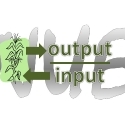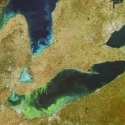06 Mar 2014
Crop Nutrient Balance - Atlantic Canada - Potassium
Nova Scotia, New Brunswick, Prince Edward Island
Potassium (K), like phosphorus, is relatively immobile in the soil and tends to accumulate when applied in surplus, except on the sandiest soils. In most of the past 40 years, the amount of K applied as fertilizer and recoverable manure has not been sufficient to match crop removal. In some years, particularly recently, even if all non-recoverable manure were added in, the supply was in deficit of crop removal (Figure 1). A very large fraction of K removal arises from the harvest of forage crops, since much of the K taken up by plants stays in leaves in stems rather than seeds. Potatoes, however, also remove a large amount of K (Figure 2). The K in manure is less susceptible to loss, and thus a greater fraction is recoverable, compared to N (Figure 3). Cattle manure contains relatively more K than N or P, relative to hog and poultry manures. The fate of the non-recoverable fraction is mostly on pastures, which are not included in the crop removal figures.
Note: amounts of potassium are expressed as K2O - to convert a figure expressed as K2O to K, multiply by 0.83.
Figure 1. Potassium inputs include recoverable manure and fertilizer, shown as stacked areas summing to the total input. Removal by harvested crops is shown by the vertical bars. The units are pounds of K2O per acre of total cropland. Non-recoverable manure is mainly left on pasture, and is not part of the cropland nutrient balance.
Figure 2. Potassium removed by harvest of major crops. Stacked areas sum to removal by the listed crops.
Figure 3. Potassium in manure, as-excreted and recoverable, from cattle, hogs and poultry.




